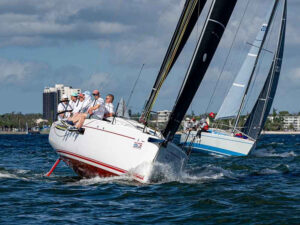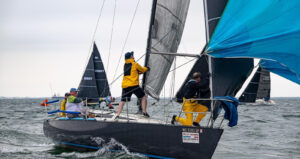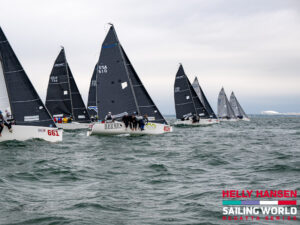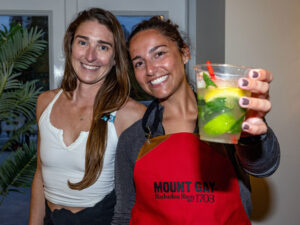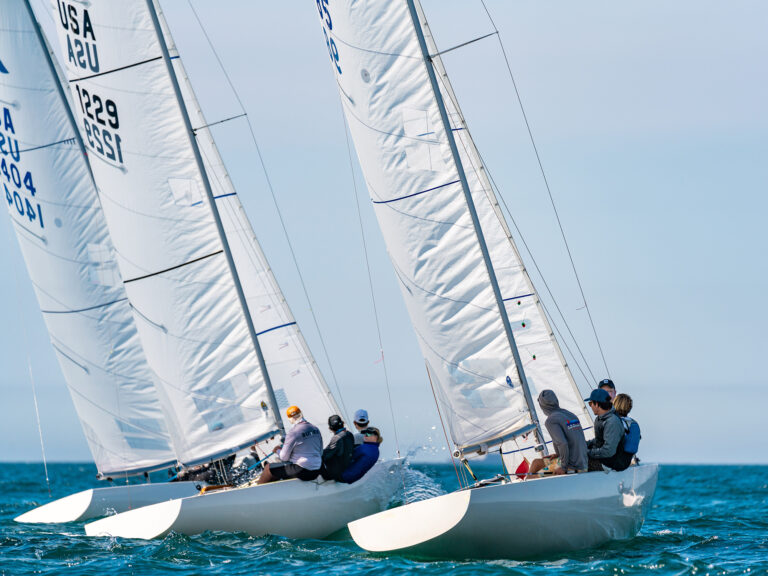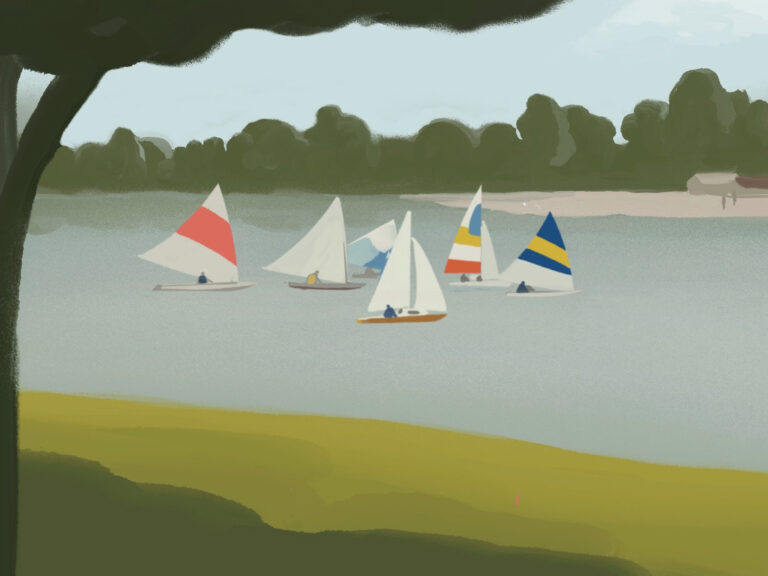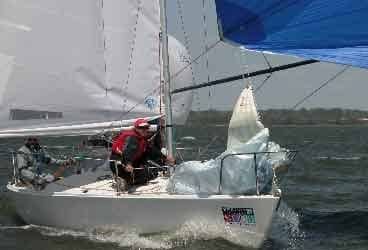
FBAnnapNOODSt
Our beloved sport has many challenging variables, not the least of which are wind, water, equipment, and, of course, our unpredictable competitors. But when it comes down to it, there’s one element that trumps all-our mentality. Sailing World’s own Dr. Stuart Walker has written volumes on the subject, and while many of us may sometimes shrug off his wisdom as senseless psychobabble, there is in fact, truth in all of it. The pecking order is real and once you overcome your fears, victory is yours to have. One guy who clearly understands this is Annapolis’ other sailing doctor, Paul van Ravensway, 55, whose team (Mike Zinkgraf, Eric Hannenberg, Terry McDonald, and Nicole Curran) on the J/24 Millennium Falcon was the overall winner of the Sperry Top-Sider NOOD Regatta in Annapolis last weekend. We caught up with him between appointments.So, is Dr. Walker correct in his belief that we’re at the root of our own undoing on the racecourse?I do think it’s accurate what Stu says about having your ego on the line and when you’re racing, in essence you’re saying, ‘I’m trying to be better than the other guy,’ but it’s easy to have all kinds of feelings to make you feel tense on the racecourse and get caught up in what’s happening, start barking at the crew and getting preoccupied with results, or getting nervous about doing well. What Stu is saying is pretty obvious. I do think about trying to relax and visualize having fun. Focusing on the sailing.Do you size up your competitors and figure out what they might do in certain tactical situations?Yeah, I would know how some in my fleet would react to certain situations. There are some that are more aggressive than others. There are always certain boats to be cautious around.What do you get out of the sport?I enjoy being completely absorbed into something different than my work. I enjoy working together with the team, and I really feel great when everyone’s happy and contributing, looking to see what they can do to make the situation better, talking about improvements to the boat, and showing real enthusiasm. I really like when that kind of juice is going on. For me, it’s a great combination of technology and understanding what’s happening on the water, playing the chess game, planning ahead as you go up and down the racecourse. You’re just involved with the kinetics of the boat, which is a total sensory thing, and all this together is great. How do you think your crews see you as skipper?I think they’d see me as a pretty good helmsman, as somebody who’s focused and determined and ready to try hard and learn and improve. They have confidence that I’m not complacent about our ability and that I want to keep moving forward, and they probably see me as a thinker. I also get tense when we are in front, and there are times when I can get distracted.How do they help get your mind back into the race?Sometimes they’ll say, “Paul, just let it go.” Sometimes they’ll be encouraging and get me focused on what our boatspeed is relative to other boats.What type of traits to you prefer in your crew?I like people that want to learn, are diligent on the boat, and stay focused about what’s going on. I like them to be congenial, of course, and inquiring. My foredeck man always talks about what he learns after every race, and I think that’s a great attitude. What’s best is a crew willing to discuss what works and what didn’t with the view towards making improvements. They also must be willing to pitch in and work on the boat and get things set up to work right.Is yours a beer or no-beer boat?Beer when we hit the dock. Although there was some discussion in Annapolis going into the last race whether it would be a good idea to have a beer at that point if it was onboard.So what happened in that last race?We were sticking tight to Mark Hillman [second overall], and on the second beat we were outside him going up the right and he kept going. We thought we’d tack when he tacked, and that if we tacked early he’d tack on us, which would mean we’d have to tack out again, which would be even slower. Other boats got ahead of us, but we thought that as long as we stayed within four or five boatlengths of Mark, there’d be five or so boats that would get packed in there. But Mark almost got himself in that pack and almost managed to beat enough boats to put enough points between us. We’ve been debating and asking what the best thing would be in that situation; do you try and split, cover, or what? We’re still mulling that over.What would Mark have done? We’re going to be racing against him this week and I’ll have a chance to talk to him at the keg. That’ll be a good question to ask him.How long have you been sailing J/24s? I grew up sailing in San Francisco bay, just crewing and pulling ropes, but not knowing a lot of theory. I had a long dry period where I was in medical school and started sailing cruising boats in the 80s and people got tired of me adjusting the jib all the time. The racing bug got back to me and we chartered a J/30 for a year on the Chesapeake and then downsized to a 24 so I could own my boat [with a partner]. I was in Philadelphia until ’97- ’98 and relocated to Annapolis. I don’t think my sailing took off until I got to Annapolis and could talk with and meet people like Terry Hutchinson, who was very helpful early on. The connections you make in the sport are so important.That’s what I’m trying to do here is organize for the better sailors to pass along information to the guys at the back of the fleet, by having some of us get on some of the other boats on Thursday nights, hosting clinics. My interest is in getting stuff going for the rest of the fleet. I like to teach in my profession and give lectures and just know it was valuable to me. I think back to my learning curve and how something essential came from an offhand comment someone would make at the party or the bar. So I’m aware that there are many basic things that beginning sailors can learn to make them better much faster. You do a lot of traveling, right?One of the attractions for the J/24 is that you can have large fleet events. So we try and have four or five events that we do every year. Our target goal is to do well in big events. I like the fact that there are pros in the fleet that I can learn from. Brian Bissell from North Sails sailed with us at Midwinters and taught us a lot, and a couple of years ago Anthony Kotoun showed us a lot of stuff at Midwinters. Greg Fisher will come out and do some tuning for us and show us pictures and give us commentary. The North guys are very helpful like that.What have you learned from them and how has it changed how you sail the boat?Anthony had us setting up the rig pretty tight. He also had us sailing with the main very flat, the traveler centered, and then really easing the genoa in and out in puffs to keep the boat on its feet rather than traveler down. That keeps the boat moving to weather even in the puffs. That was a major change in style. He showed us about surfing-when the wave comes up to use crew weight to roll the boat. He taught us to use the main to keep the boat flat when it starts to roll to weather, and to get away from other boats. You can’t go fast if you’re sailing with other boats. Most importantly, though they’ve taught us the basic differences in attitude, that little things count, to stay focused, to keep an eye on the main goal. They’ve given us a little more of the go get ’em attitude, of not being afraid to be amongst better sailors-a greater sense of confidence.What about with the tuning of the boat; what have you learned from these guys?Anthony also taught us how to use a gauge for measuring how close the tips of the shrouds are at the base so we can reproduce shroud settings easily. In addition to the LOOS gauge, and then using the calipers to measure the distance. It makes it easy to re-center the mast when traveling, or when you come back after a day and you’re not sure the turns were right and you want to make sure the mast is centered. When you go out you put it back to your recorded settings.Do you adjust your mast butt very often?We use rope off the winches to adjust the mast butt. We drilled extra holes in the step so that we can do small adjustments. We move it forward every time it’s over 12 knots. We move it forward one hole in heavy air. We’re still playing with it to find the sweet spot for 8 knots. We’re not confident we found it yet, but we think we have a spot that is right and we move it forward from there. We’ve been trying to adjust our shrouds by how the sails look rather than strictly b the tuning guide. We’re trying to learn to adjust the uppers to get the jib stay tension right, and then try to get the right balance in the lowers so that the main looks right. I aspire to not having a guide.Was it a surprise to win the overall trophy, and the trip to the BVIs for the NOOD Caribbean championship?It was a complete surprise, but the entire crew is onboard. They’re ready to go and have already cleared their schedules.

